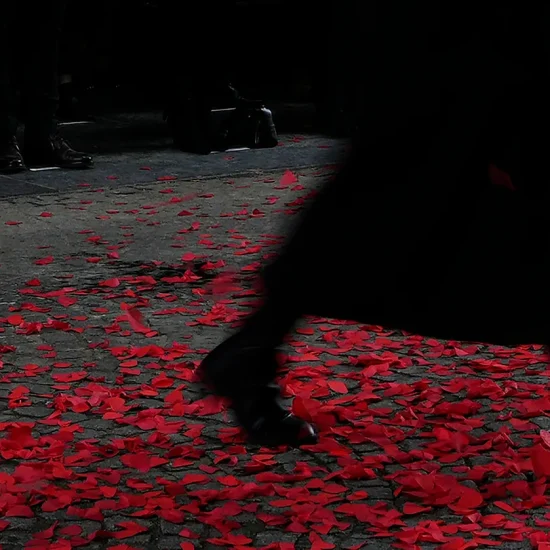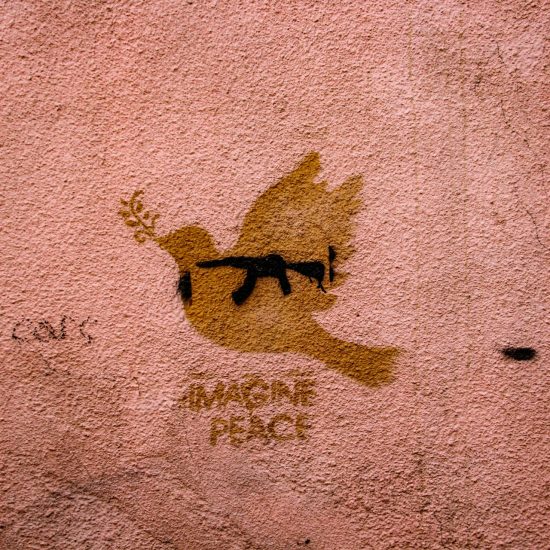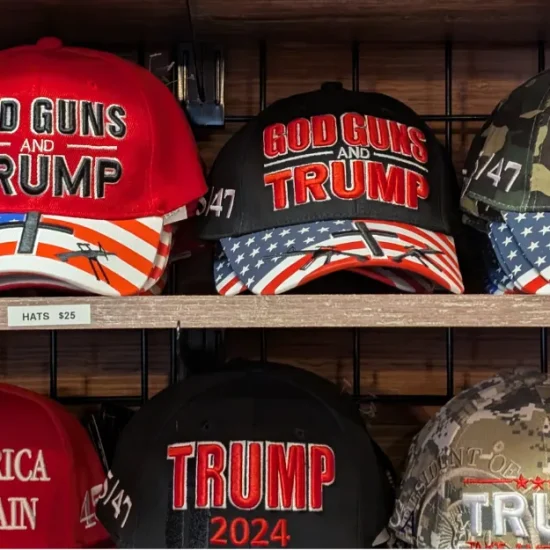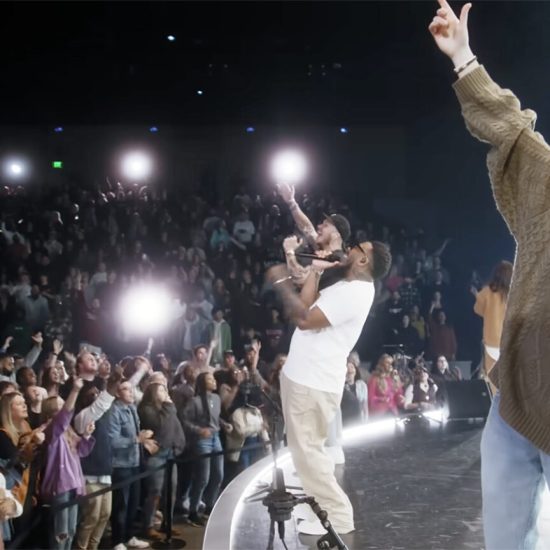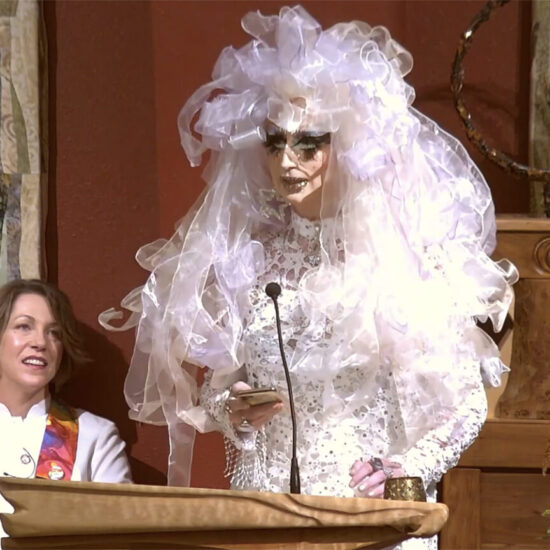NASHVILLE, Tenn. (USA Today Network) — The deadly shooting at Burnette Chapel Church of Christ is just the latest instance of a place of worship being targeted by violence.
The Sunday (Sept. 24) shooting that left one woman dead and seven other people injured conjures up memories of other high-profile attacks, such as the June 2015 massacre of nine people at Emanuel African Methodist Episcopal Church in Charleston, S.C.
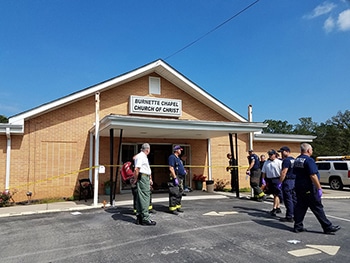 The aftermath of a shooting at the Burnette Chapel Church of Christ in Antioch, Tenn., on Sept. 24, 2017, that left one dead and seven wounded. Photo courtesy of the Metro Nashville Police DepartmentOther recent attacks have included the August 2012 shooting at a Sikh Temple outside of Milwaukee that killed six people. Then there are civil rights-era attacks on churches, such as the September 1963 bombing that killed four girls at 16th Street Baptist in Birmingham, Ala.
The aftermath of a shooting at the Burnette Chapel Church of Christ in Antioch, Tenn., on Sept. 24, 2017, that left one dead and seven wounded. Photo courtesy of the Metro Nashville Police DepartmentOther recent attacks have included the August 2012 shooting at a Sikh Temple outside of Milwaukee that killed six people. Then there are civil rights-era attacks on churches, such as the September 1963 bombing that killed four girls at 16th Street Baptist in Birmingham, Ala.
Attacks on churches are where Mike McPherson’s thoughts went as he waited at Vanderbilt University Medical Center on Sunday for updates on his friend Joey Spann, who is the Burnette Chapel minister.
“You think you’re going to be safe in church,” McPherson said.
Spann was shot in Burnette Chapel’s foyer while he was greeting people as they left the building, McPherson said. On Monday, the conditions of Spann and the other hospitalized victims were all listed as stable. A 25-year-old Rutherford County man has been charged with criminal homicide.
Gaining courage, confronting evil
People are shot at churches every year across America. There aren’t any official government statistics on the subject, but some researchers have attempted to quantify it.
The Center for Homicide Research counted 137 shootings at Christian churches from 1980 to 2005. That’s probably an undercount, said senior researcher Dallas S. Drake, because older databases were less comprehensive. A lack of funding and a lack of cooperation from congregations have frustrated researchers.
Drake monitors national news reports through Google alerts. He hasn’t noticed any clear trend in recent years.
“There’s a ton of training out there that’s available to people,” said Drake, referring to popular “active shooter” courses. “People who have been morally fearful in the past are gaining courage and finding that when they’re confronted with evil we don’t have to hide.”
Metro police have credited a 22-year-old churchgoer for helping to stop Sunday’s attack.
As the victims continue their recovery, the impact of the Burnette Chapel shooting reverberates across the Nashville community and beyond.
“These things don’t happen in a vacuum,” said Daoud Abudiab, president of the Faith & Culture Center in Nashville.
“Because of other shootings, because of other incidents, it’s hard to draw a line,” Abudiab said. “It’s seen in the context of violence directed at houses of worship.”
‘It is still difficult to talk about’
For Abudiab, the violence that unfolded Sunday morning at the Antioch church draws his mind back to February 2008, when the Islamic Center of Columbia was vandalized and burned down. No one was injured, but the mosque was destroyed and the attack caused emotional harm.
“It is still difficult to talk about it,” said Abudiab, who was president of the mosque at the time. “I get that lump in my throat.”
The attack pushed mosque security to the forefront.
When the mosque moved into a new facility, it installed security. He noticed members would lock the mosque doors during prayer. Abudiab became hyper-focused on the safety of the children. He was worried about drive-by attacks, making sure the children never played in front of the building.
Violence against a place of worship is like experiencing violence in the home, Abudiab said.
“It just takes away from that sense of safety and belonging,” Abudiab said.
Attacks against places of worship or buildings connected to a specific faith community are not infrequent in Tennessee. Several have been motivated by bias against a particular faith group.
Dynamite wrecked the front of Nashville’s Jewish community center in 1958. Federal authorities thwarted plans to bomb The Temple on Harding Pike in 1981, and West End Synagogue was shot at nearly a decade later. A man tried to firebomb a Nashville rabbi’s home in 2009 but threw the Molotov cocktail at the wrong house.
Last year in Memphis, church security stopped an armed man who attempted to enter Bellevue Baptist Church just after a Sunday morning service started. A security guard took the man’s two guns without incident.
Property is damaged in less severe cases. Last year, a swastika was carved onto a door at West End United Methodist Church in Nashville. Vandals left bacon and spray-painted slurs at the Islamic Center of Murfreesboro this summer.
Houses of worship pursue enhanced security
A long history of anti-Semitism has made security an ongoing priority at The Temple, said Rabbi Mark Schiftan. Temple officials don’t share specifics but are frequently reassessing and updating safety measures, he said.
After the Sunday morning church shooting, Schiftan emailed congregation members about enhanced security at The Temple, which is in the midst of the Jewish High Holy Days.
“You may notice some of these upgrades to our security as you enter the building. Some other precautions may be less noticeable, but will be in place as well,” Schiftan wrote.
The Temple tries to be both a welcoming and a secure place. But in this increased season of divisiveness, including threats against Jewish community centers earlier this year and anti-Semitic rhetoric during recent protests in Charlottesville, Va., The Temple’s main obligation is protecting members of its community, Schiftan said.
That’s a choice churches and houses of worship often face, said Lt. Todd Caron of the Anderson County Sheriff’s Office in South Carolina. Some churches across the nation and in Nashville hire private security or off-duty police. Others do not.
“You can’t pat someone down and give them a hug at the same time,” Caron said.
Caron said he thinks churches are on average safe places but believes people still must be aware of their surroundings.
“We can still be open and loving and be cautious and prepared,” he said. “When greeting people, you can’t give them the stink eye. But you should notice if they’re disgruntled or upset; they may need some help or you may just want to keep watch on them.”
Mike Reicher and Mike Ellis contributed to this report.

